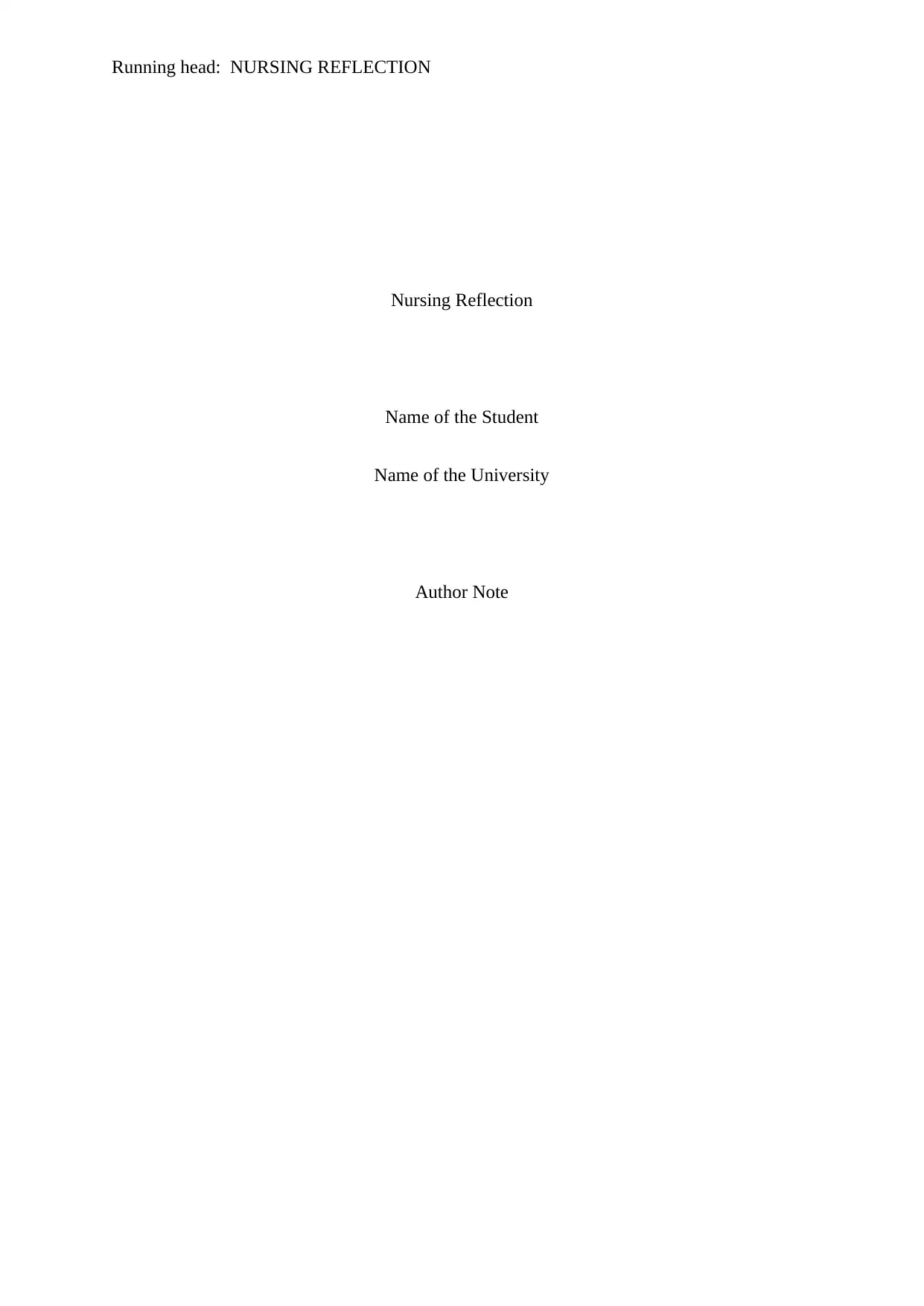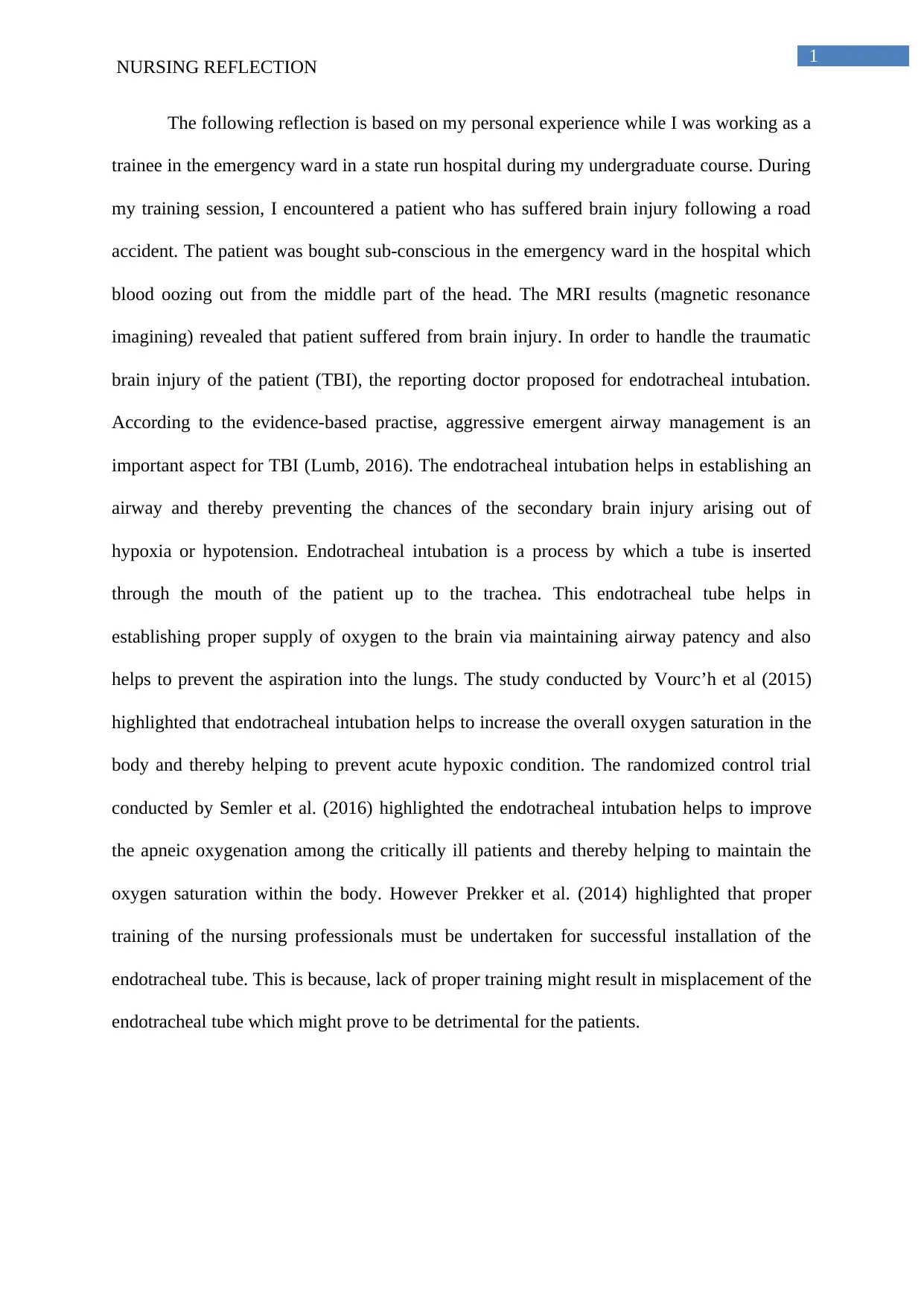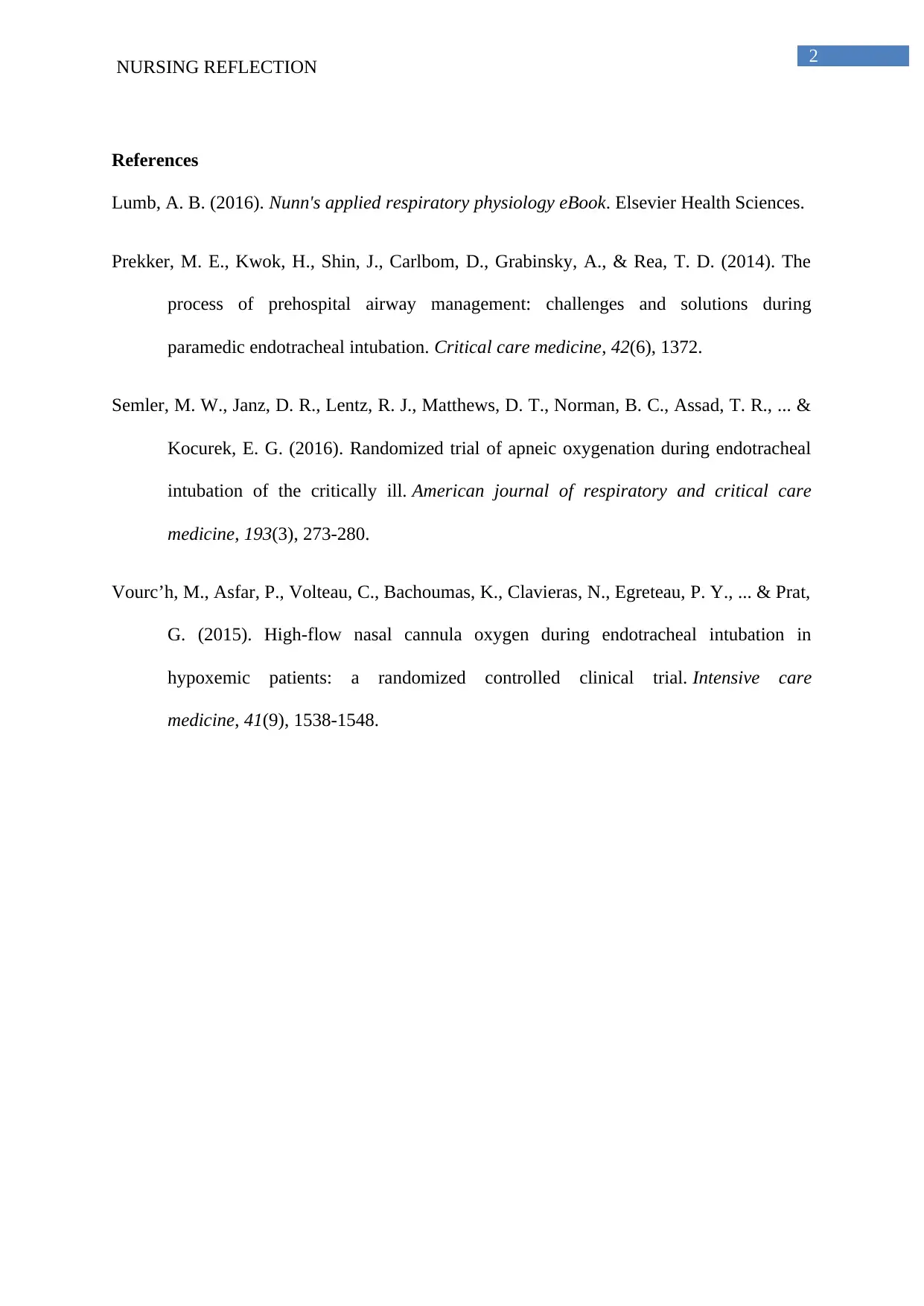Nursing Reflection: Experience with Endotracheal Intubation for TBI
VerifiedAdded on 2023/06/10
|3
|569
|226
AI Summary
This nursing reflection details a student's experience with endotracheal intubation in an emergency ward setting while managing a patient with a traumatic brain injury (TBI). The reflection highlights the importance of endotracheal intubation in maintaining airway patency and preventing secondary brain injury due to hypoxia or hypotension. The procedure involves inserting a tube through the patient's mouth into the trachea to ensure proper oxygen supply to the brain and prevent aspiration. Evidence-based practices supporting the use of endotracheal intubation for TBI are discussed, referencing studies that demonstrate its effectiveness in improving oxygen saturation and apneic oxygenation. The reflection also acknowledges the need for proper training of nursing professionals to avoid complications during the intubation process, emphasizing the critical role of skilled nursing care in managing emergency situations and improving patient outcomes. Desklib offers a wide range of solved assignments and study resources for nursing students.
1 out of 3





![[object Object]](/_next/static/media/star-bottom.7253800d.svg)